Laser hair removal

Laser technologies have been used in human life for a long time. One of the areas of application of the laser for beauty and health is the removal of unwanted hair from any part of the human body. Laser hair removal offers to get rid of vegetation forever. It is worth considering all aspects of this procedure in more detail.

What it is?
Laser hair removal is the removal of hair by influencing the hair shaft - up to the bulb. It allows you to destroy it and stop growth forever. This procedure is significantly different from the usual options for hair removal at home. The most common method of getting rid of hair at home is to use a razor, as well as creams or epilators.
Depilation with a razor or depilatory cream allows you to remove only the superficial part of the hair above the skin, so regrowth will be quite fast. This is the difference between depilation and epilation procedures. Hair removal at home allows you to pull out the hair completely, significantly slowing down its appearance on the surface of the body.
Laser hair removal completely destroys the hair follicle, so it cannot grow back.
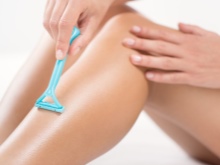


The action of this technique is based on the content in our hair and skin of a special coloring substance - melanin.. Thanks to him, the surface absorbs the energy of light, turning it into heat. The laser hair removal machine produces a short but powerful pulse of light that is absorbed by the hair. Its entire structure (together with the follicle) is heated, causing the hair to die.
It is impossible to destroy all the hairs at once. The thing is that only those hairs that are in a period of active growth react to the laser pulse. The rest are unaffected. At the same time, only about twenty percent of all active hairs.
Because of this, in order to obtain the ideal result (clear and smooth skin), it is necessary to perform several procedures.
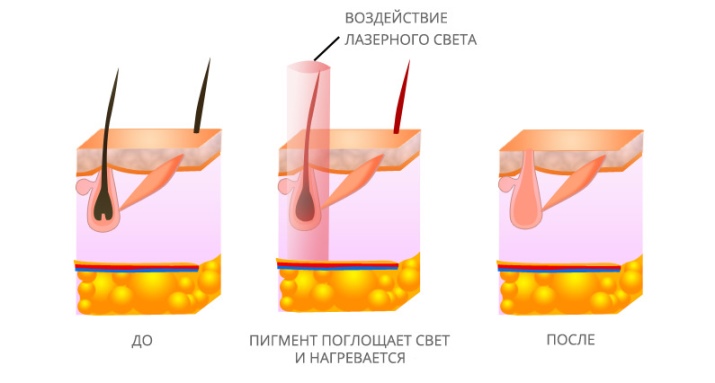
Laser hair removal is suitable for both girls and men. Most often, women get rid of unwanted vegetation on the legs, underarms or in the bikini area. Men can expose any areas where the hairs interfere with them: armpits, chest or chin and cheeks.
The difference in exposure depends on the contrast between the skin and hair. For the most obvious and quick result, the patient must have dark hair and light epidermis. So the light energy will be absorbed by the hair. She will destroy it without affecting the skin. However, now it is possible to adjust the impulse to affect any intensity of hair color.
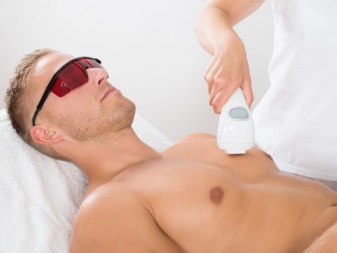
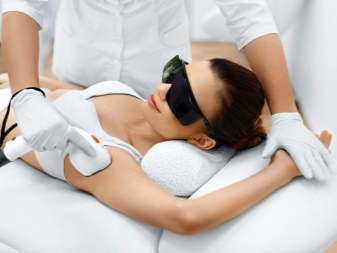
Laser or electrolysis - which is better?
Electrolysis is quite different from laser exposure.. The first procedure uses not light energy, but electric current. When it is carried out, the hair is either captured with tweezers, or a medical thin needle is brought to its follicle. One of these methods is an electric current that heats the bulb and destroys it. The techniques of laser and electricity are different, but patients get the same result. The follicles are destroyed, and the hair cannot grow further.
The consequences after carrying out these procedures differ. After electrolysis, red spots may appear on the skin, and during the recovery time of the epidermis, slight itching and burning may be observed.
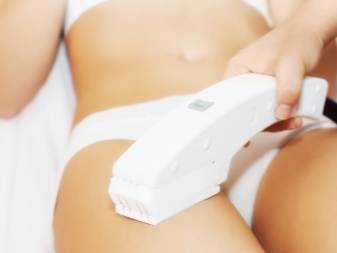

Slight redness may occur after laser treatment., but usually it is the result of a recent tan or the lack of professionalism of the physician who performed the procedure. But with electrical removal, scars on the dermis can become a consequence of poor preparation of a specialist - due to an incorrect calculation of the current strength. Therefore, you need to choose a specialist carefully in any case, but special attention should be paid to this if electrolysis is necessary.
At the same time, electric current can cope with any type of vegetation, including very thin and light ones. After all, the effect does not depend on the content of melanin in the hair.
It can be concluded that electrolysis is better suited for blond hair. But at the same time, the laser is a safer and painless method.
Features of the procedure in different areas
Laser hair removal allows you to remove hairs from almost the entire body.
Professional cosmetologists must take into account the nuances of the growth and location of hairs in a particular area - for their high-quality removal and the correct calculation of the course of necessary procedures.

The depth of the hair follicle depends on the area on the body. The wavelength at which the laser will operate should depend on this. If the choice is wrong, the session will be ineffective. The hair follicles of the arms, legs, back, armpits, bikini and chest in men lie most deeply. The equipment must have sufficient wavelength for high-quality processing of these areas. A diode or neodymium laser can cope with this. But the older ruby and alexandrite devices cannot provide the desired length. Because of this, the masters working with them can set increased power, which threatens with greater intensity of pain and even burns.
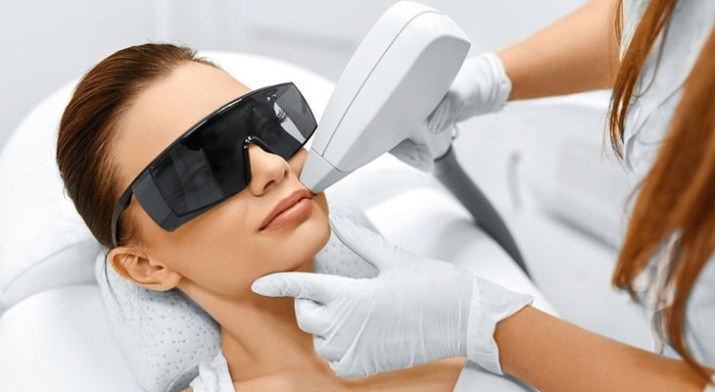
Hairs on the face, chin, above the upper lip lie closest to the surface of the skin. The problem is that they can be thin and light. In this case, again, it is worth making a choice in favor of newer models of a neodymium or diode laser.
The eyebrow area can also be treated with a laser. It must be taken into account that the laser tip is not very small, so it will not work to fine-tune the shape of the eyebrow. The procedure is suitable for those who suffer from the problem of fused eyebrows in the bridge of the nose. In this case, it turns out to be solved quite easily.
The degree of sensitivity of different zones should also be taken into account. Usually, the face and bikini area are the most susceptible to discomfort. When epilating these areas, it is worth using an anesthetic gel, which will significantly increase the comfort of epilation.The same goes for hypersensitivity.
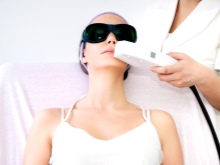
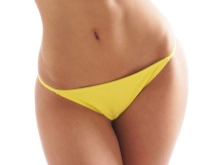

Kinds
Laser technologies that a modern cosmetology clinic can offer differ in their type:
- Traditional laser hair removal uses the energy of a beam of light created by a laser. It is able to act on hairs that lie at a depth of less than four millimeters under the surface of the skin.
- Elos - is a combination of the use of light energy and electric current, combines laser technology and thermolysis. A laser acts on the surface of the hair, and under the skin, the follicle is destroyed by an electric discharge. This method allows you to act on vegetation that lies under the skin by five to six millimeters.
- Cold epilation carried out at a higher processing speed of the epidermis. This improvement minimizes the risk of thermal burns and discomfort. This option is especially relevant for dark-skinned patients.
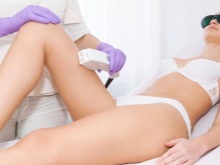
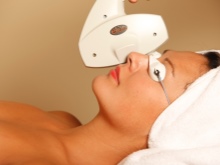

When epilating, different types of laser equipment are used:
- ruby laser is the oldest. Can use wavelengths up to 694 nm. It can only work on dark hair combined with white skin. In addition, it is used in cosmetology to get rid of age spots and tattoos with fairly bright and contrasting colors.
- Alexandrite laser capable of producing waves up to 755 nm. Serves for working with hairline of light or red shades. It is also used to remove pigmentation and old tattoos.


- diode laser is a newer version. Uses wavelength up to 810 nm. This allows you to get rid of hairs of any color and with different epidermis.In addition, it is used in the cosmetic treatment of excessive hair growth and their rigidity. Over time, they become softer and lighter, and then completely disappear.
- neodymium laser is the newest and most perfect form. Its wavelength is up to 1063 nm, and infrared radiation is also present in the beam of light. Helps to fight even with dark vegetation on dark skin. In addition, it treats vascular and capillary networks, acne and helps to make scars less noticeable.
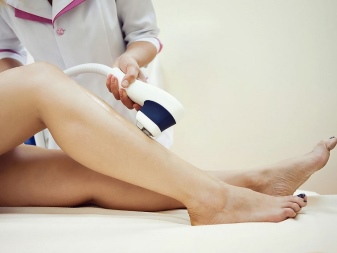
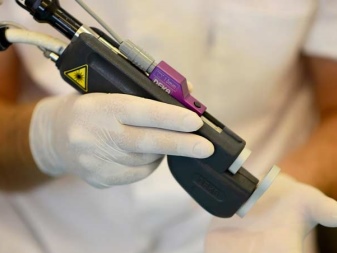
Photoepilation can also refer to laser hair removal, but it takes a broader approach.
Various types of lasers are used in clinics. A wide network of Louis Dor beauty salons offers patients epilation with diode and alexandrite lasers. Some devices (for example, "1S Pro”) combine several technologies in one device. And the devicesSoprano» combine two effects: a laser and a cooling system that increases the comfort of the session.

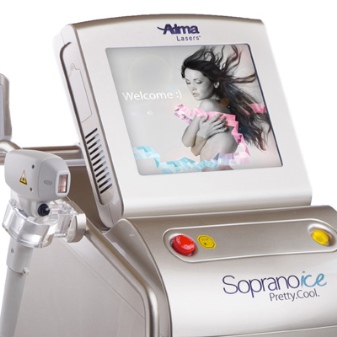
Training
In order for the hair removal session to be most successful, certain preparatory measures are necessary:
- Do not sunbathe two weeks before the appointed time. Otherwise, secure areas that will be affected. It is imperative to do this. Firstly, between tanned skin and burnt hairs, the contrast will decrease significantly. This will significantly reduce the effectiveness of the procedure. Secondly, the tanned epidermis is extremely sensitive, while the recently exposed to the sun is still irritated. In this case, due to exposure to light during the operation of the laser, burns and redness can occur.
- Two weeks before the session, the hairs should not be pulled out or lightened. It is better to refuse to use wax, sugar paste, homemade epilator. You don't even need to shave your hair. The optimal length is three to five millimeters. It allows you to achieve maximum efficiency with a minimum of discomfort. However, in some cases, on the eve of the procedure, the master may ask you to shave off the vegetation.
Details in each case will be told to you in the salon.

How many procedures need to be done?
Remember - with the help of laser energy, only those hairs that are in the active growth phase can be removed.. “Sleeping” hairs are not affected during the procedure, and there are about 80% of them in our skin. Do not forget that it takes several sessions to get perfectly smooth skin.
The number of procedures depends on the type of epidermis, features and color of the hairline. It is determined by the doctor at the reception (with each patient).
There is a myth spread by advertising agents that you can remove hairs in just three or four procedures.. However, this is only said to attract customers. Usually, about seven to eight sessions are required to obtain a satisfactory result. In the presence of hormonal problems and diseases, hair growth can be enhanced by the action of hormones. The skin on the face is especially susceptible to this effect. In this case, up to ten to fifteen sessions may be needed.
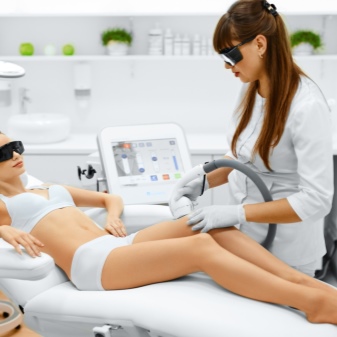

In cosmetology practice, cases have been recorded when hairless skin could be achieved in just four sessions. But this is more of an exception that proves the rule.
The vast majority of patients require more than four laser treatments for hair removal.
Care after
After carrying out all the necessary actions, the cosmetologist who deals with the patient applies an agent to the treated area of \u200b\u200bthe body that helps relieve irritation of the epidermis.
After a session for several days, the person himself must use the means to care for the dermis. For this, a special lotion can be used, which has a nourishing and softening effect. In some cases, burns and irritation may occur during the procedure. If this happens, the patient is recommended to use wound healing and anti-burn drugs - for example, those containing panthenol.
If you follow all the doctor's recommendations, you can get rid of all undesirable consequences within one or one and a half weeks.



It is worth noting what actions should be avoided after laser hair removal:
- Avoid tanning in a tanning bed and natural sun for one to two weeks. If this is very difficult for you, be patient for at least three or four days. Otherwise, the risk of irritation and burns increases.
- Also not worth visiting. bath or sauna.
- Medications should also be limited. Caution should be taken with antibiotics, antipsychotics, hormones, sulfanilamide and some other drugs.



- If, nevertheless, it was not without burns, crusts cannot be removed from them. Otherwise, the formation of scars or the appearance of areas with increased pigmentation is not excluded.
- Go out into the sun with sunscreen. Moreover, the SPF protection factor in them should be at least 30.
Remember that after exposure to a laser, the skin is irritated and needs protection and care. Apply moisturizer, care and sunscreen daily.

How much is enough?
Everyone who resorts to the procedure of laser hair removal or is just thinking about it, is concerned about the question of how long the effect will last. Not everyone knows how often the procedure will have to be performed.
The result begins to be noticeable after the third procedure. In some small areas, the hair stops growing altogether, in others it becomes paler, thinner and thinner, growing more slowly.

If the vegetation is dark, but not very thick and tough, the number of treatments can be reduced to four, but this does not happen very often.
After the first session, the second time you need to come to the clinic in about one month. Subsequent procedures add another two weeks. After completing the full required course (usually six to eight sessions), you can increase the interval to a year. At the same time, rarely does anyone manage to remove vegetation forever. For most patients, cosmetologists recommend maintenance procedures at least once a year.



The number of sessions and their effectiveness depend on various features:
- hormonal background, various related diseases;
- site processing;
- hair structures, their stiffness and thickness;
- colors: dark hairs on light skin are quite easy to remove, but with less contrasting combinations it is already more difficult;
- growth characteristics vegetation.


It is possible to distribute all patients resorting to this type of hair removal into several groups:
- The first group includes those who has a hairline that is not at all thick and is mainly concentrated in the areas of the armpits, the intimate area and on the shins. For such people, less than six procedures may be enough to obtain a smooth epidermis.Then they can maintain this state by repeating the procedure at intervals of two years.
- Those men and women who by nature or due to hormonal changes, failing hair grow thicker and faster, form the second group. They may need about ten sessions of laser therapy to achieve their desired goal. To maintain the smoothness of the skin, they will need to repeat the procedure twice a year.
- The third type includes those who have contraindications to the use of laser therapy. In this case, the issue is resolved with a cosmetologist, all the risks and positive aspects are considered, after which a decision is made.
Effects
There may be pain during the procedure. (depending on the individual sensitivity of the patient). There may also be negative consequences. These consequences may arise due to the characteristics of the body, the tendency to allergic reactions and improper preparation for the session.
Sometimes after the procedure, patients complain of redness of the skin in the laser treatment area, called hyperemia. In addition, cases of edema of the skin, bruises were recorded. Burns and their consequences, manifested in the form of blisters, are also possible.
This can happen for two reasons. First: sunbathing or solarium. The skin after sunburn is irritated and painful. Therefore, burns are possible due to the intense exposure to light during laser flashes.
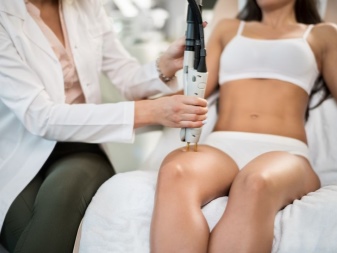

This condition is treated with anti-inflammatory and healing drugs (for example, based on panthenol).
The second reason may be the lack of experience and proper education of the doctor conducting the procedure.This can be avoided only by carefully choosing a clinic and a specialist, making sure that all the necessary certificates are available.
Why don't they fall out?
During the procedure, with the help of temperature, the hair follicles on the treated area are destroyed.. As a result, the hair stops growing and falls out. But this does not happen immediately. Part of the vegetation disappears within two weeks after the session. Others do not fall off, but grow, because most of the vegetation during the procedure is in the stage of sleep or rest. That is why the next procedure, and then another one, may be necessary. The course is determined for each patient individually - by a cosmetologist at the laser hair removal clinic.

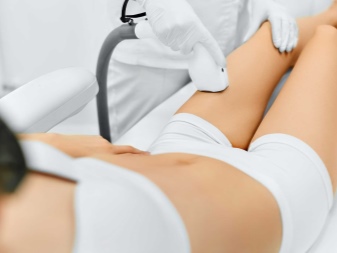
Contraindications
Laser hair removal is safe (compared to many other methods of radical hair removal), but there are some contraindications in which you definitely cannot resort to such a procedure:
- Do not remove hair using a laser during pregnancy. You should refrain from breastfeeding.
- Acute or chronic skin conditions (especially in the area of impact) - a direct contraindication.
- Some diseases endocrine system (especially diabetes mellitus).
- Herpes and any other infectious diseases in the active phase.


- Oncological illness.
- If there is likelihood of an epileptic seizure the procedure should also be excluded, because numerous bright flashes (even through glasses) can cause an exacerbation.
Laser equipment is a fairly serious equipment that requires careful and competent handling.
If you decide to resort to a similar method of hair removal, be sure to choose a good cosmetology clinic and consult a competent specialist.
Pros and cons
Like any innovation, laser hair removal has its pros and cons.. It is better to learn about them before using them in order to reasonably weigh the pros and cons for yourself.
During laser exposure, the hairs absorb light energy, turning it into heat (due to the content of melanin). The rod heats up, the follicle collapses and falls out. This heats up the hair. The skin does not heat up, so there is practically no discomfort. The most effective laser affects the vegetation that rises above the skin by three to five millimeters. The rest enter the growth phase after the procedure, so it needs to be repeated.



So, it is worth listing the main disadvantages of hair removal with a laser:
- The need for multiple procedures from 7 to 10 (depending on the structure of the hair, the type of skin and individual characteristics).
- For the effectiveness of the procedure, a contrast between the color of the skin and hairs is necessary. The laser will work well with dark hair growing on light skin, because only in this case the light will be absorbed to the maximum by the hair structure, and not by the epidermis. With dark skin and black hair or light hairs on a pale surface, it is difficult to achieve a satisfactory result.
- Many refer to the disadvantages and the cost of the procedure. Especially when you consider that it will take a lot of sessions. However, others are willing to pay even a high price for the complete disposal of unwanted vegetation.

Laser hair removal has a lot of positive aspects. This is what makes it very popular among consumers. So, the main advantages:
- Under all conditions, the procedure practically does not cause discomfort. With high sensitivity of the skin or in areas rich in nerve endings, anesthetic gels can be used to increase comfort.
- No major damage skin, such as scars or scars.
- In the case of maximum contrast, you can lose hair forever. In other cases, after completing the full course, supporting procedures are required - once a year or six months.
- Each session does not take very long. It depends on the area being treated. For example, a specialist can treat the armpit area in fifteen minutes. The hips have the largest area, so working on them can take 40 minutes or an hour.
How old can you do it?
Hormonal restructuring of the body lasts until the end of adolescence. Before the completion of hormonal changes, it makes no sense to remove hair with such a radical method, because there is a high probability that the hairline will be restored.
After 14-15 years old, you can come for a consultation with the doctor of the clinic. He will determine whether it is already possible to resort to the procedure or whether it is worth waiting for more.

Why can't you sunbathe?
Sunburn makes the skin more vulnerable and susceptible to damage.. Because of this, sunbathing or solarium is not recommended before or after laser exposure. After all, the procedure uses light of very high intensity. Exposure to ultraviolet light before or after increases the risk of redness and burns.

Reviews
Reviews about laser hair removal are different.Someone rejoices at the complete disposal of vegetation, but for many it comes back. To obtain the ideal result, a preliminary consultation is required.



The blogger talks about the myths and realities of laser hair removal.




























